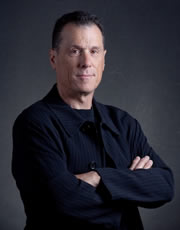 As I was writing the catalog essay for the Quadrennial Faculty Exhibition, I was thinking about Joseph Beuys, whose work is permanently installed in the Chazen Museum. Despite his international fame as a maker, Beuys was never far from teaching. Beuys initially taught in an era that was politically fraught: post-war, mid-century Germany. His commitment to teaching was tempered by his commitment to political reform, and he was involved in the founding of several activist groups including the Free International University, which emphasized the creative potential in all human beings and advocated cross-pollination of ideas across disciplines.
As I was writing the catalog essay for the Quadrennial Faculty Exhibition, I was thinking about Joseph Beuys, whose work is permanently installed in the Chazen Museum. Despite his international fame as a maker, Beuys was never far from teaching. Beuys initially taught in an era that was politically fraught: post-war, mid-century Germany. His commitment to teaching was tempered by his commitment to political reform, and he was involved in the founding of several activist groups including the Free International University, which emphasized the creative potential in all human beings and advocated cross-pollination of ideas across disciplines.
Beuys claimed that his objects and performances were not, in and of themselves, the focus of his efforts. Rather, their function lay in getting their viewers to think, ask questions, and above all, to recognize their own inherent creative potential. “Every human being is an artist,” became Beuys’s best-known creed; and his theory of social sculpture—which held that as an expanded concept of art, one must consider politics, law, economics, and science—became his most important and enduring art-work.
Beuys’ practice and his heartfelt belief that art was and should be universally accessible—that, indeed, everyone is an artist—brings to mind the writings of John Dewey in his seminal publication, Art as Experience, written in 1934. Dewey believed that every person is capable of being an artist, living an artful life of social interaction that benefits and thereby beautifies the world, and further that art is a requirement of democratic citizenship.
Patricia Goldblatt notes that, for Dewey, “Processes of inquiry, looking and finding meaning are transformative.” She goes on to say that:
A sudden transformative experience occurs when viewers experience a ‘rupture’ from the mundane, are drawn to, or perceive meaning. Investigation expands inquiry and revitalizes meaning… The experience stands alone, but is then returned to the former stream of daily life with new significance.
Dewey situated art as experience, inseparable from a certain moral component. Artists who practice within the academy cannot simply separate or isolate the responsibilities of their position. It is simply impossible to dissociate the making of art from intellectualism; even the most expressive gestures are made by in the context of synthesis, as exemplars of creative possibility. Nor can one separate the intellect from embodied experience; gestures of creativity in an academic space are made from inside of the ecosystem of knowledge production and its deconstruction. It is a complex system in which research, teaching and service are porous designations.
Research in the context of artists in the academy is eccentric and by nature full of trespass. Painters consider literature, sculptors immerse themselves in film history or science, and in general disciplinary boundaries are a taunt not a confinement; they dare us to transgress territorial borders. Often such research is not evident in “the work.” Rather it is the generative move of the work. Such are the immense possibilities of a university. And we see this in the work of our students as well. “Painters” make video, “sculptors” make temporal or ephemeral work, we see content driven and conceptual work that strays from its disciplinary point of origin. That is the strength of our program and what we hope to see long into the future.
Douglas Rosenberg
Professor and Chair, Art Department
